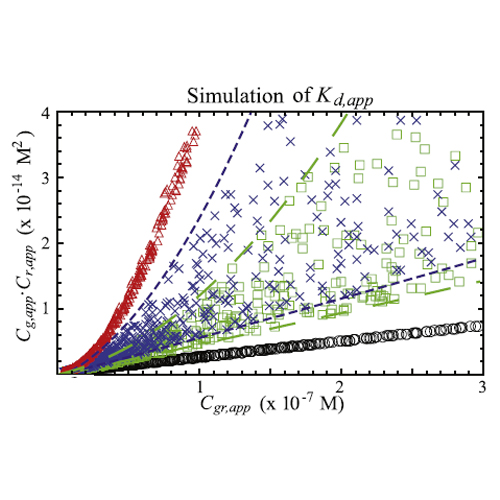Factors Affecting the Quantification of Biomolecular Interactions by Fluorescence Cross-Correlation Spectroscopy
07-Mar-2012
Biophysical Journal, 2012, doi:10.1016/j.bpj.2012.01.040, Volume 102, Issue 5, 1174-1183 published on 07.03.2012
Biophysical Journal, online article
Biophysical Journal, online article
Fluorescence cross-correlation spectroscopy (FCCS) is used to determine interactions and dissociation constants (Kds) of biomolecules. The determination of a Kd depends on the accurate measurement of the auto- and cross-correlation function (ACF and CCF) amplitudes. In the case of complete binding, the ratio of the CCF/ACF amplitudes is expected to be 1. However, measurements performed on tandem fluorescent proteins (FPs), in which two different FPs are linked, yield CCF/ACF amplitude ratios of ∼0.5 or less for different FCCS schemes. We use single wavelength FCCS and pulsed interleaved excitation FCCS to measure various tandem FPs constituted of different red and green FPs and determine the causes for this suboptimal ratio. The main causes for the reduced CCF/ACF amplitude ratio are differences in observation volumes for the different labels, the existence of dark FPs due to maturation problems, photobleaching, and to a lesser extent Förster (or fluorescence) resonance energy transfer between the labels. We deduce the fraction of nonfluorescent proteins for EGFP, mRFP, and mCherry as well as the differences in observation volumes. We use this information to correct FCCS measurements of the interaction of Cdc42, a small Rho-GTPase, with its effector IQGAP1 in live cell measurements to obtain a label-independent value for the Kd.











